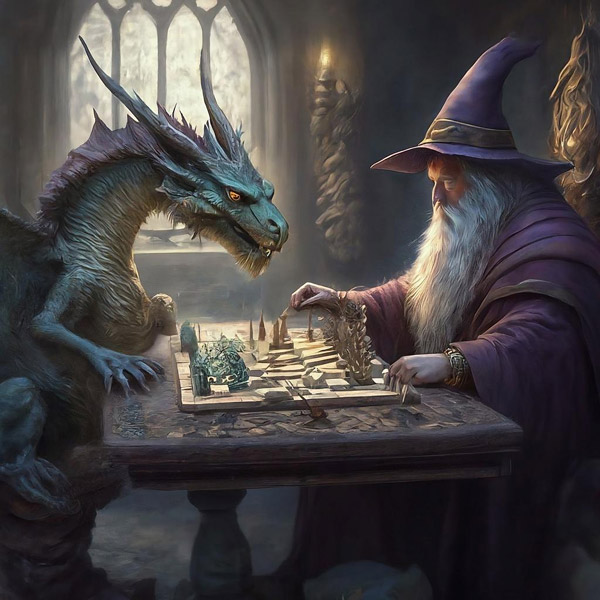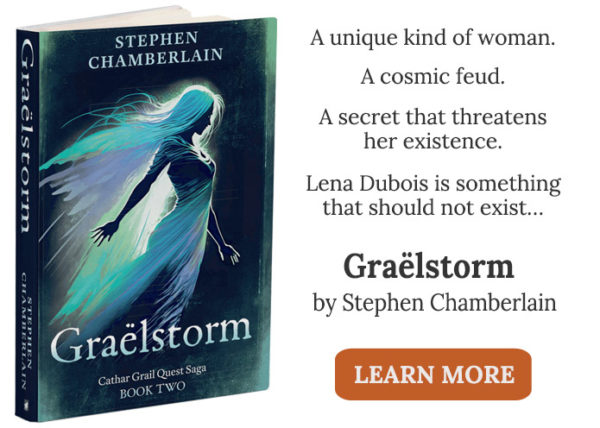Plot Meets Place
Creating a story often begins with a spark of inspiration—an image, a moment, or a theme. For my first novel, Graëlfire, that spark came from two primary sources: a theme for a plot and its setting. The theme was a quest for the Holy Grail. The setting was the landscape around my home by Lake Geneva. To make this premise believable, I had to invent a new myth tracing the Grail’s path to Switzerland. That meant blending historical facts with popular legends linking the Grail with the Templars and the Cathars.
Rather than explain this backstory through exposition, I dramatized it as a historical subplot. That’s when the story expanded into two timelines. The subplot follows a Grail quest set in thirteenth-century Languedoc and Lombardia. The main plot picks up the quest in modern-day Switzerland, near the alpine border with Italy. These two storylines run side by side and eventually converge, showing how events of the past influence the characters’ present.
The setting acted like a chessboard, guiding my characters’ moves one square at a time. I drew inspiration from the landscapes and features around my home: snow-capped mountains rising sheer from the Rhône Valley floor, Swiss castles around Lake Geneva, steep terraced vineyards, and a subterranean lake with crystal-clear waters. These places weren’t just backdrops; they determined the atmosphere and challenges my characters would face.
Enter the Characters
As my plotting progressed, Graëlfire’s main characters took shape: Lena Dubois, Gideon Drude, Count Angelo, and Raphaël Proctor. At first, they were like chess pieces on a board: archetypes such as the hero, villain, mentor, and sidekick—characters defined more by their function than their individuality. Each had a role to play in driving the plot forward. But archetypes, while useful for structure, can quickly become clichés if left undeveloped—predictable figures like the charming prince or the evil dark lord. I wanted more than game pieces. I wanted people—flawed, complex, and alive. So, I dug deeper, giving each character a unique backstory, emotions, and personal motivations. Gradually, they transformed from flat figures into fully realized individuals who began to drive the story.
The key lay in exploiting their point of view. Every person is shaped by their personality and experiences. Fictional characters should reflect this diversity. Though they may start as archetypes, they can become real people through their thoughts, memories, contradictions, and desires. By exploring how characters interpret the world around them, you can transform functional pieces into complex, believable individuals. That’s what happened in my writing. My characters started as archetypes supporting Graëlfire’s plot, but they took control as soon as I let their choices direct the story.
Characters at the Helm
By the time Graëlfire ended, I knew the story wasn’t truly over. I had resolved the quest, but the story felt unfinished. I kept asking myself, what happens next to these characters? What challenges will they face because of everything they’ve been through? That’s when I realized—they wouldn’t just return in Graëlfire’s sequel; they would lead it. I wanted to explore the impact their choices would have on their lives, the friendships they’d formed, and the sacrifices they’d made. Writing the sequel, Graëlstorm gave me the chance to delve deeper into who they were—their hidden fears, desires, and motivations.
The setting also shifted to a universe far from our own, opening space for immersive world building within my fictional cosmos. I explored Elyzia, the home world of the Graëlheem like Raphaël Proctor; created Asfödel, a forested under-realm of souls; and uncovered the liminal Hölige sanctuaries of the three Arkheïa. This expanded world also welcomed new voices. Alongside the returning cast, I introduced characters like Corneila Drude, Oriël Drude, Lord Luther, and Lady Celestine—each bringing fresh dynamics and tensions to the unfolding story.
Mastering the Game
Through the process of writing my two novels, I discovered how storytelling can grow and shift in unexpected ways. What begins as a simple idea can develop into something far more layered, often guided by the characters themselves.
All the best stories have strong plots, rich settings, and unforgettable characters working together. Plot drives the action, pushing characters to make choices and moves that raise the stakes. Setting builds the mood, sets the rules, and throws up obstacles. It makes the story immersive. But it’s the characters who breathe life into everything. They bring emotion, depth, and meaning. Plot and setting may keep readers turning the pages, but the characters make them care. They’re the ones readers relate to, root for, cry over, or rage against. When that connection is made, readers will follow them anywhere—through plot twists, time jumps, or galaxies far, far away.
The number of permutations in a game of chess is astronomically large. Despite having a fixed board and a limited set of pieces, each move opens alternative paths, strategies, and outcomes. Storytelling mirrors this same potential. Like chess, every story follows a structure—but how it unfolds is never quite the same. The choices characters make can unlock new possibilities, steering the plot in unexpected directions.
If you’re starting your writing journey, here’s my advice: build your story on a strong plot and a vivid setting—but let your characters lead. Sometimes, the story you set out to write is only the beginning of something much bigger, shaped by the lives of the people you create.



